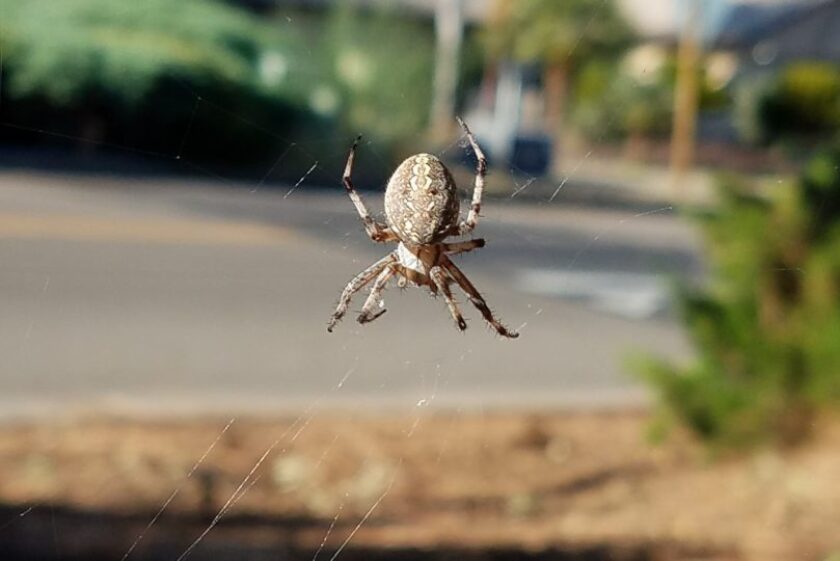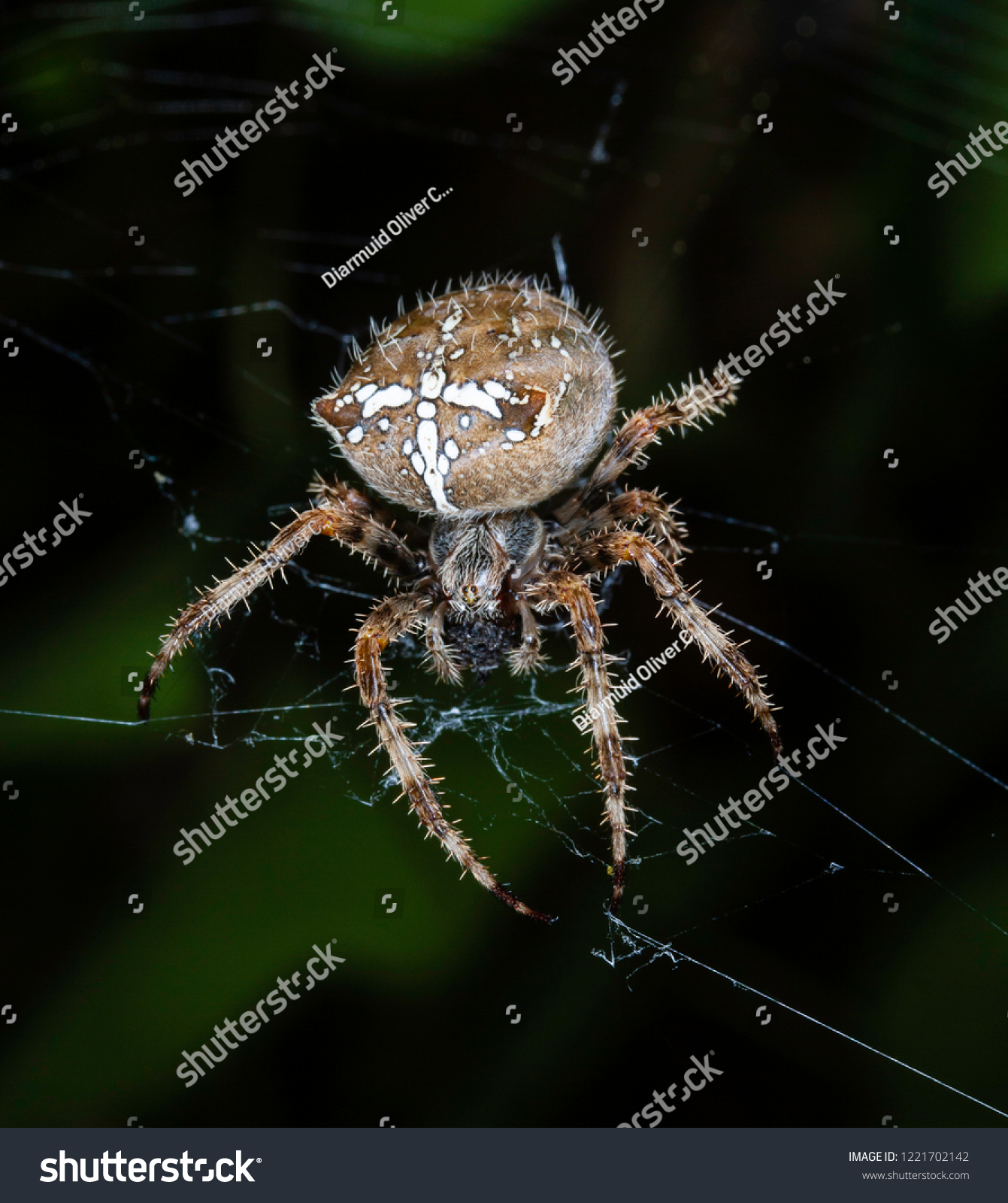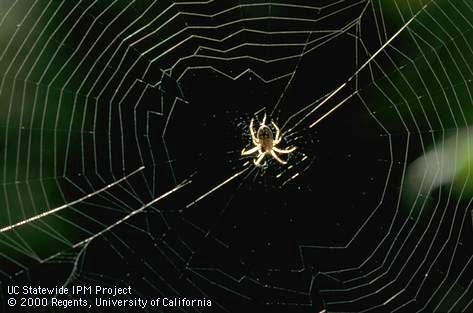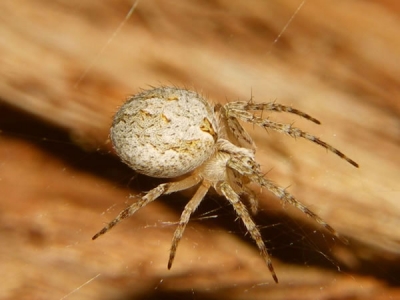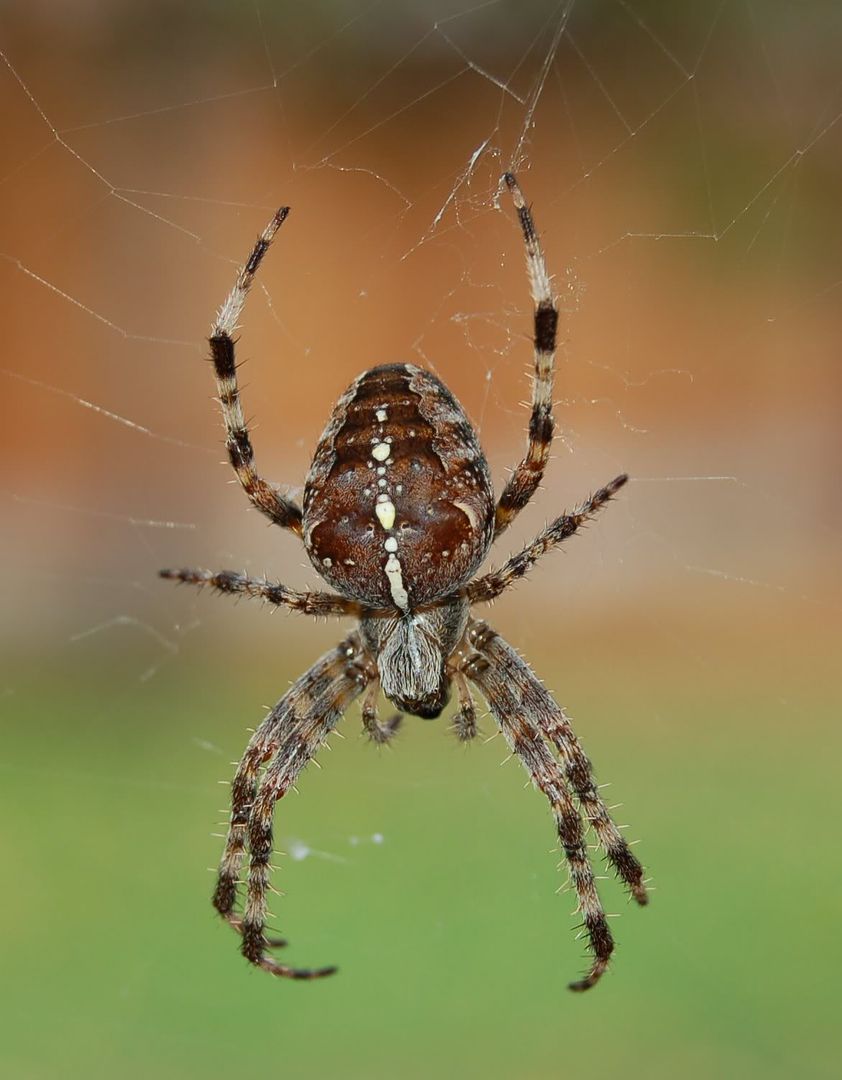Garden Orb Weaver Spider
The garden orb weaver spider bite is not lethal.

Garden orb weaver spider. When the prey is secure the orb weaver administers a bite and sits back to allow the deadly venom. The family is cosmopolitan including many well. The web of the garden orb weaver spider is very large and can measure up to three feet in diameter. Habitat often found in summer in garden areas around the home they spin a large circular web of 2 metres or more often between buildings and shrubs to snare flying insects such as flies and mosquitoes.
The common golden orb weaver spider has a purplish bulbous abdomen with fine hairs. The garden spider is brown in color though it can at times be grey. Their webs are large vertical and large. When observed in their natural habitats orb weavers will usually be seen hanging head down in their web.
Orb weaver spiders sometimes have a dorsal stripe which may be white or brown edged. An orb weaver bite may only cause mild local pain. It is an orb weaver spider found in europe and north america. The family contains an immense variety of different species including over 3000 species placed in 172 different taxonomic genuses.
Most are stout reddish brown or grey spiders with a leaf shaped pattern on their fat roughly triangular abdomens which also have two noticeable humps towards the front. It is a member of the family araneidae that includes 3122 species in 172 genera around the world. It doesnt pose any serious threat to the health of humans. They live in webs that are located in the openings of trees and shrubs.
When an insect flies into the web the spider senses the vibration rushes out from the web centre and rapidly wraps the victim in silk rotating it with its shorter middle legs. Many of the various species have relatively large bodies recognizably circular webs and bright coloration. An orb weaver is any species of spider in the araneidae family. Many orb weavers are brightly colored.
They are often seen in bushy areas in australia waiting upside down in their web patiently waiting for their prey. Garden orb weaving spiders make wheel shaped webs in openings between trees and shrubs where insects are likely to fly. There are about 100 species of orb spiders in australia. Orb can in english mean circular hence the english name of the group.
They have a triangular shaped abdomen with humps that you can easily notice on their front side. Araneids have eight similar eyes hairy or spiny legs and no stridulating organs. They may have white or brown color on the edges. Orb weaver spiders or araneids are members of the spider family araneidaethey are the most common group of builders of spiral wheel shaped webs often found in gardens fields and forest.
Garden orb weaver spiders may be seen in various variants and color across the coastal areas at the eastern states of australia. The spider species araneus diadematus is commonly called the european garden spider diadem spider orangie cross spider and crowned orb weaverit is sometimes called the pumpkin spider although this name is also used for a different species araneus marmoreus.
